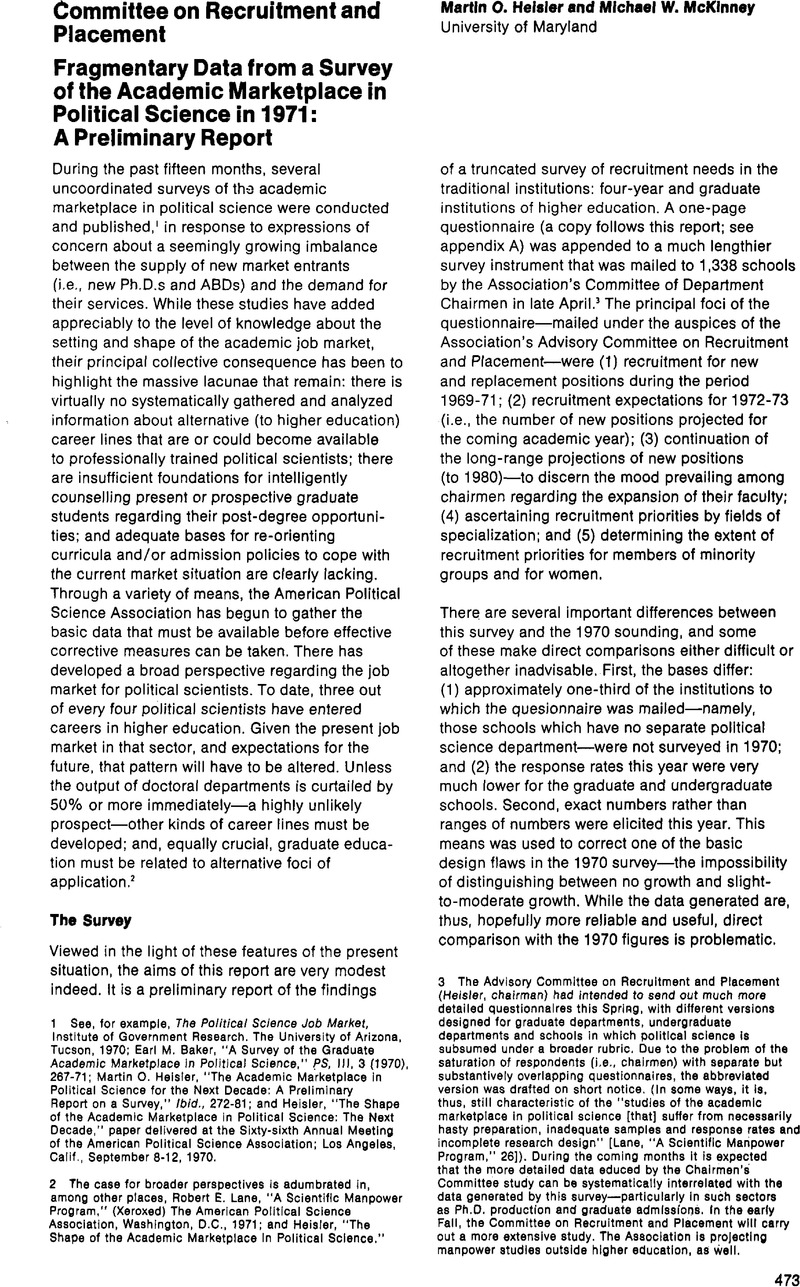No CrossRef data available.
Article contents
Fragmentary Data from a Survey of the Academic Marketplace in Political Science in 1971: A Preliminary Report
Published online by Cambridge University Press: 28 November 2022
Abstract

- Type
- Committee on Recruitment and Placement
- Information
- Copyright
- Copyright © The American Political Science Association 1971
References
1 See, for example, The Political Science Job Market, Institute of Government Research. The University of Arizona, Tucson, 1970; Baker, Earl M., “A Survey of the Graduate Academic Marketplace in Political Science,” PS, III, 3 (1970) 267–71Google Scholar; Martin O. Heisler, “The Academic Marketplace in Political Science for the Next Decade: A Preliminary Report on a Survey,” Ibid., 272–81; and Heisler, “The Shape of the Academic Marketplace in Political Science: The Next Decade,” paper delivered at the Sixty-sixth Annual Meeting of the American Political Science Association; Los Angeles, Calif., September 8–12, 1970.
2 The case for broader perspectives is adumbrated in, among other places, Robert E. Lane, “A Scientific Manpower Program,” (Xeroxed) The American Political Science Association, Washington, D.C., 1971; and Heisler, “The Shape of the Academic Marketplace in Political Science.”
3 The Advisory Committee on Recruitment and Placement (Heisler, chairman) had intended to send out much more detailed questionnaires this Spring, with different versions designed for graduate departments, undergraduate departments and schools in which political science is subsumed under a broader rubric. Due to the problem of the saturation of respondents (i.e., chairmen) with separate but substantively overlapping questionnaires, the abbreviated version was drafted on short notice. (In some ways, it is, thus, still characteristic of the “studies of the academic marketplace in political science [that] suffer from necessarily hasty preparation, inadequate samples and response rates and incomplete research design” [ Lane, , “A Scientific Manpower Program,” 26 Google Scholar]). During the coming months it is expected that the more detailed data educed by the Chairmen's Committee study can be systematically interrelated with the data generated by this survey—particularly in such sectors as Ph.D. production and graduate admissions. In the early Fall, the Committee on Recruitment and Placement will carry out a more extensive study. The Association is projecting manpower studies outside higher education, as well.
4 Coding and key-punching were done by Christine Hill and Rona Hitlin of the APSA staff. Machine tabulations were carried out by M. W. McKlnney, using the facilities of the University of Maryland Computer Science Center.




